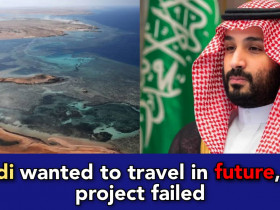No products in the cart.
Good News, Now India will buy helicopters which can fly as well as float on water
Article Sorce: Financial Express
India and Japan have revived talks on $1.65-billion sale of ShinMaywa US-2i amphibious aircraft to the Indian Navy and a decision is expected by the end of the year. The aircraft is the only of its kind that can even float on water surface- this means that it doesn’t need any land surface or aircraft career for landing.
The Indian Navy and the Indian Coast Guard are seeking 12-18 of these search and rescue aircraft (SAR) to expand their reach and capability. A senior officer said, “Japan is offering the amphibious aircraft for manufacture in India under Prime Minister Narendra Modi’s indigenisation drive. There have been intense discussions between two sides on reviving the deal that had been put on hold, as both sides have tried to iron out issues that forced the government.
Both New Delhi and Tokyo have been discussing and attempting to iron out all issues related to the purchase of ShinMaywa Industries’ US-2i amphibious aircraft.
ShinMaywa, the Japanese maker of the plane, claims that the US-2 is the world’s best short takeoff and landing (STOL) amphibian aircraft. The plane can land on rough seas with a wave height of around 3 metres. The US-2 can cruise at extremely low speeds of approximately 90 km/hr. The US-2 has an approximate operational range of 4,500 km and a cruise speed of 480 km/hr. The Indian government has reportedly been keen to acquire amphibious aircraft, not just for the fact that it will deepen the strategic partnership with Japan, but also that it would send a message to China. Both India and Japan are wary of China’s assertive behaviour in the Asia-Pacific region, and defence experts are of the view that US-2i will help India protect its assets better and enhance surveillance activities and abilities in the Indian Ocean Region.
Abhijit Singh has said, “Significantly for India, China’s growing maritime presence has created an imperative for Delhi to ramp up its operational logistics capability in the Eastern Indian Ocean.” Abhijit Singh is a former naval officer, who heads the Maritime Policy Initiative at ORF. Abhijit Singh goes on to explain, “The deal for US-2 has major implications for the India-Japan strategic partnership. It was stuck since 2014 because of bureaucratic delays and price issues. Also, India wanted Japan to make 10 aircraft under license in India. Japan thought the number was too less. Now, the price has been reduced by 10%, I think. There is no doubt that US-2 is a good strategic asset. Apart from the fact that it is a good aircraft for search and rescue, it will also enhance Indian Navy’s operational logistics. This would help greatly to the realization of Indian Navy’s strategic ambitions in the Indian Ocean Region”.












